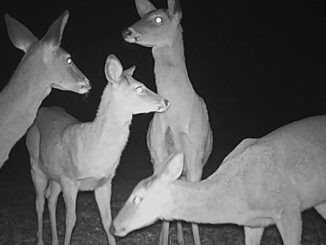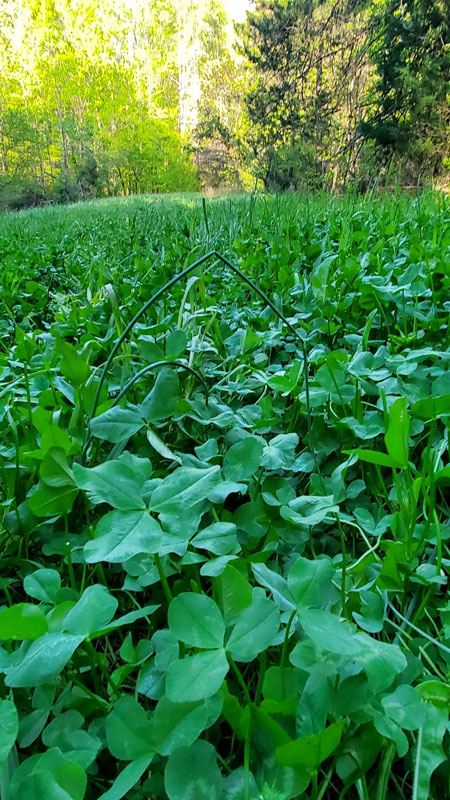
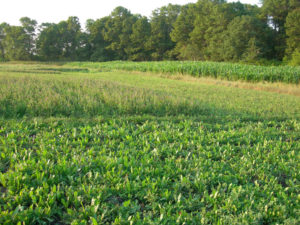
Food plots planted during winter will be as important to the health of a deer herd as those fall plantings used to attract whitetails. Here’s how to make the most of them.
As deer populations began to increase around Louisiana due to the restocking efforts of the wildlife and fisheries agency in the 1950s and 1960s, hunting seasons slowly began to open.
During the 1970s, the state enjoyed an explosion in deer numbers, and by the early 1980s, most parishes with deer habitat had plenty of deer. In the 1980s, deer-management programs began to expand in an effort to improve deer quality and increase the number of older-age bucks.
“Let ’em go and let ’em grow” became the prevailing management cry, and today, more adult bucks are being harvested by Bayou State hunters than at any time in our history.
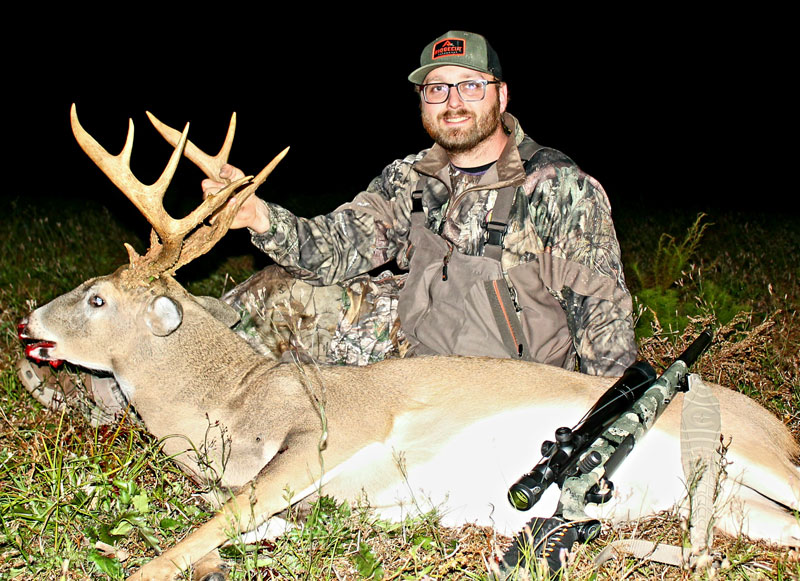
Early on, hunters took a page from the farmer’s deer book and learned that deer really enjoy agricultural crops and forages. The idea of food plots for deer came around, and today, planting a food crop for whitetails is a common practice.
Nutrition is the key for growing quality deer: bucks and does. Nutrition quality during the spring and summer is critical, because these are the important months for body and antler growth, as well as reproduction. Healthy does are more productive, and antlers grow larger when quality food is available.
For the most part, the focus of most hunters is planting food plots in early fall for hunting season. As native forage declines in late fall and winter, deer are readily attracted to a well-managed food plot. Most hunters plant some sort of winter grass, but the smart hunter who sees the big picture will plant forages that provide both fall hunting opportunity as well as quality nutrition during spring.
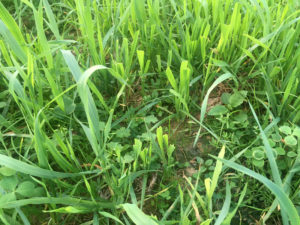
Food plots are normally planted from early September to mid-October; this allows time for the seeds to germinate and begin growing, especially if the planter has done the right groundwork. Most hunters focus on winter grasses, wheat and oats, which provide better nutrition than rye grass, but rye grass is much easier to grow and, if fertilized, will attract deer for hunting.
The smart deer manager will incorporate a diversity of seeds in his plantings, mixing winter grass with clover. Both provide forage for hunting purposes, but the clovers will provide deer with quality nutrition during the spring and summer, provided rainfall occurs on a regular basis. Last year, I had red clover mixed in my winter planting strips, and the clover lasted well into late summer and was being heavily eaten by deer.
So, if one plants a food plot in the early fall, why would one want to plant one late in the hunting season? One reason would be that the first planting did not do well and good forage was lacking; the plot was taken over by winter weeds that deer may not eat. Another would be that the deer jumped on the plot early and basically ate it up. This will happen in years when the mast crop is poor and quality native forages are lacking.
One way to correct the problem would be to simply sow more winter grass such as wheat or rye in late November or early December and hopefully get a late crop of forage for hunting in January.

Another reason to plant late is to focus on clover and other quality forages high in protein that will be available during spring and summer. Crimson clover, red clover, arrowleaf clover, white clover, osceola clover and chicory are some species that will provide deer with quality protein during the growing season. As I previously mentioned, the red clover was browsed heavily into August, when jointvetch patches really kicked in and deer moved into them. This year, I have planted additional clover and chicory strips next to the jointvetch patches, which die back after the first frost.
My hope is that the deer are familiar with these plantings and will stay around and take advantage of the available nutrition. I am also hoping that perhaps the time clover is available for deer may be extended since these patches were not available for browsing in October and November. I planted these at the end of November; germination has been good, and the new plantings should become well established in December. Our property is small, and a key for us to have success is to provide deer with quality food and pull them in from the pine-dominated forests around us.
I have spent a good bit of time with hardwood tree plantings, and at some point, this property should become an acorn oasis for deer during the fall and winter. Tree planting is long-term management, and while I will not benefit from it, my sons and grandsons will. In the meantime, I will use the cool-season forage plantings to attract and hold deer.

